Rwanda is home to five egret species. When people think of egrets they think of white heron-like birds, but since the Black Egret, which is usually known as the Black Heron is actually an egret it is included in this article. The largest of Rwanda’s five egrets is the Great White Egret, it’s all white with a long neck that is often held kinked in an ‘s’ shape. In non-breeding birds the bill is yellow, during the breeding season the bill turns black. The Great White Egret has dark line – called a gape line – which runs from the end of the bill to behind the eye. (see photograph below).
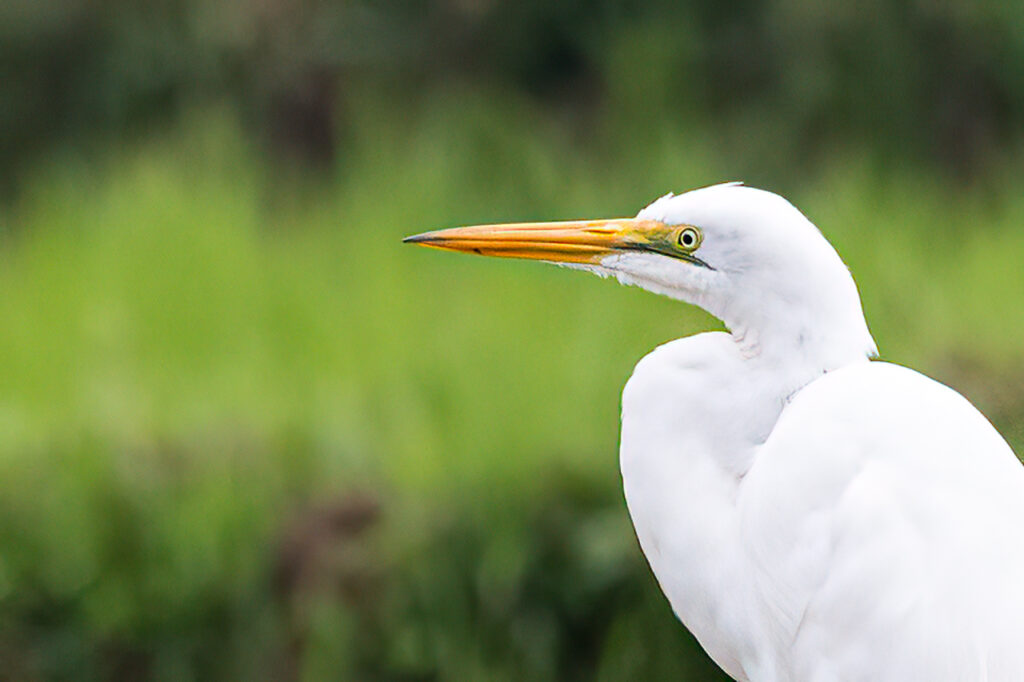
Similar to, but slightly smaller than the Great White Egret is the Yellow-billed or Intermediate Egret. The bill of the Yellow-billed Egret is also smaller and the gape line stops below the eye (see photograph below). Both the Great White and Yellow-billed have blackish brown legs and feet which turn lighter during the breeding season.
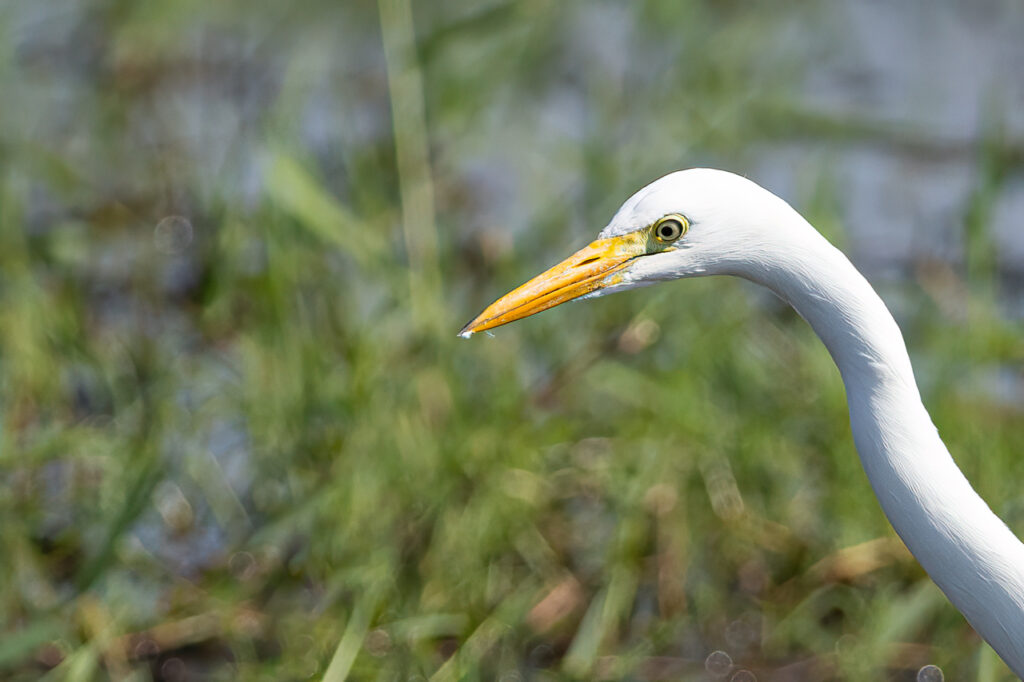
The third white egret in size is the Cattle Egret. Non-breeding adults are all white with a yellow bill and yellowish legs. During the breeding season Cattle Egrets have an orange wash on their head, back and chest. (see photograph)
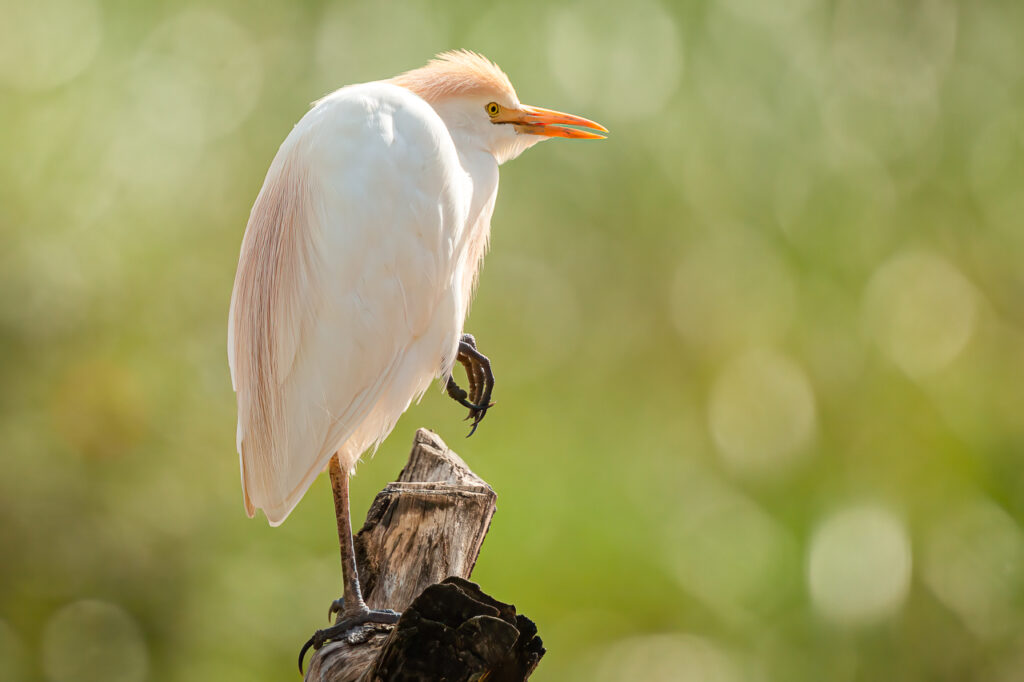
The smallest all white egret is called the Little Egret. This elegant species has a black bill, black legs, and bright yellow feet. As mentioned earlier, the fifth egret species is the Black Egret which can be found in Rwanda between June and April. Their black plumage, bill and legs are an awesome contrast to their bright yellow-orange feet. The ruffled crest is also pretty special!
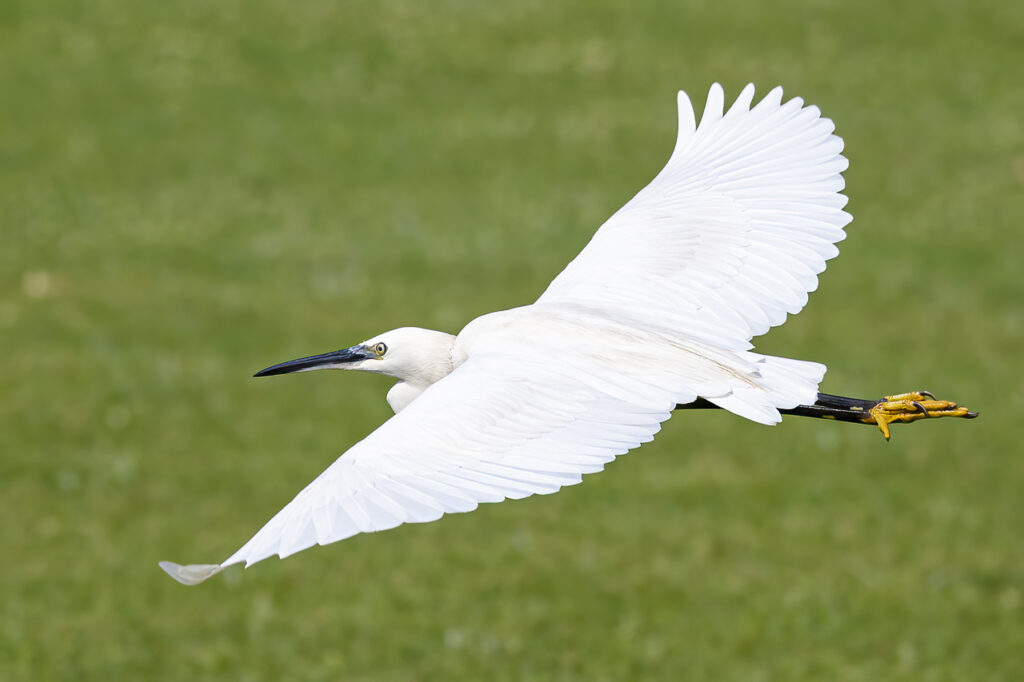
Most egrets can be found in the various wetland habitats across the country, often hunting in shallow water. The Cattle Egret, called Inyange in Kinyarwanda, is the only egret not to be associated with water. Instead, this species is usually found foraging in grassland with large herbivores. Travelling across Rwanda I often see flocks of cattle egrets with herds of cows which are out to pasture. They are also a common sight in Akagera National park, perched on the backs of hippo, rhino, elephant, and buffalo! The movement of these larger animals whilst grazing on grass or travelling through water disturbs insects and other invertebrates that the cattle egrets prey on. This type of relationship obviously benefits the egret but neither benefits nor injures the larger animals and so it is called a commensalism. Should the larger herbivores also benefit from the relationship, from the birds’ alarm call for example, then the relationship would instead be called a mutualism.
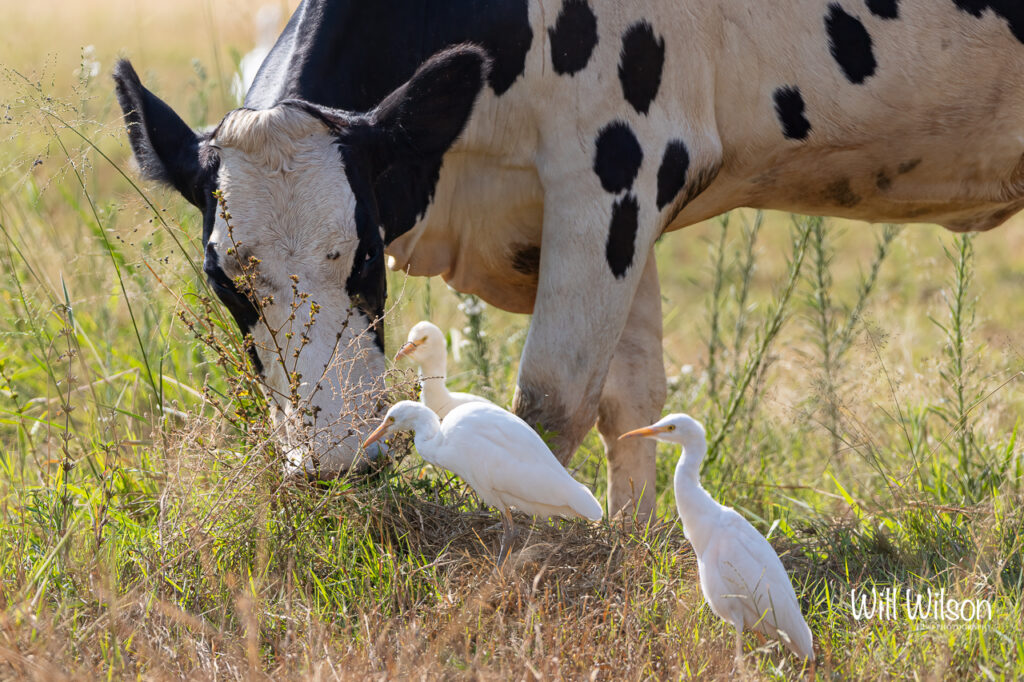
Egrets employ a number of different hunting strategies to catch their food. The primary method is to stand, wait and watch for movement – for the aquatic species this is done whilst stood in shallow water. For Cattle Egrets, this feeding strategy is achieved either whilst perched on the back of the large herbivores or stood amongst a grazing herd. A second method that egrets use to catch prey is to walk slowly through shallow water, often ‘trembling their feet’ to disturb prey on the muddy bottom, which they then grab with their bill. Egrets often feed communally and with other species of feeding birds, when this happens they will also be on the lookout for prey items disturbed by the movement of others. The Black Egret employs a unique method to catch their prey which is fascinating to watch. Stood in shallow water they crouch down and wrap their wings to the front of their body creating an ‘umbrella’. The umbrella casts a shadow on the water which attracts prey towards them, and at the same time reduces the glare of the sun, helping the Black Egret see movement below. Looking down towards its orange feet, the egret waits to see the dark shadows of their prey passing over the top of their bright feet, before striking with its sharp bill. The multiple lakes in Rwanda are great places to see this awesome feeding behaviour.
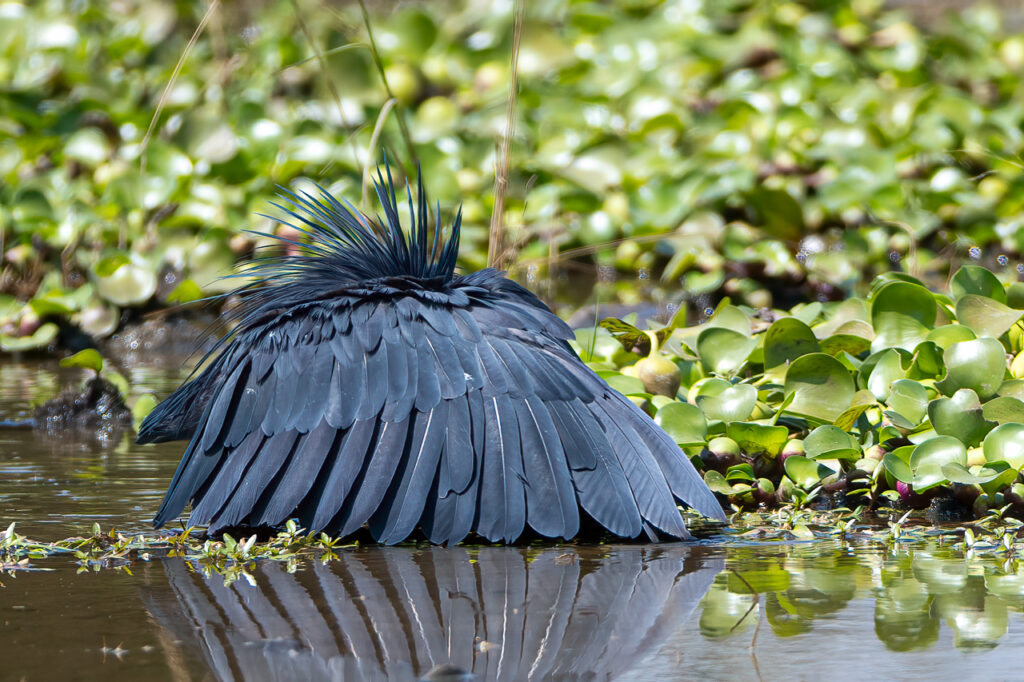
Egrets roost communally in trees, often with other herons, storks, and cormorants. I saw a great example of a huge ‘mixed species heronry’ on Lake Ihema, whilst on a boat trip in Akagera National Park. These heronries are also where egrets build their nests during the breeding season. Egrets form socially monogamous pair bonds and are territorial only for the duration of the breeding season. Courtship displays include them displaying their breeding plumage and bill clattering, where one hits the side of their bill against their mate’s bill is also common. Pairs will also preen each other; this is known as allopreening and is thought to reinforce the pair bond. Parental duties, including incubating the eggs and raising the nestlings is done by both parents. Egrets typically raise two or three chicks from the nest during each breeding season, ensuring that they remain a common site across Rwanda.

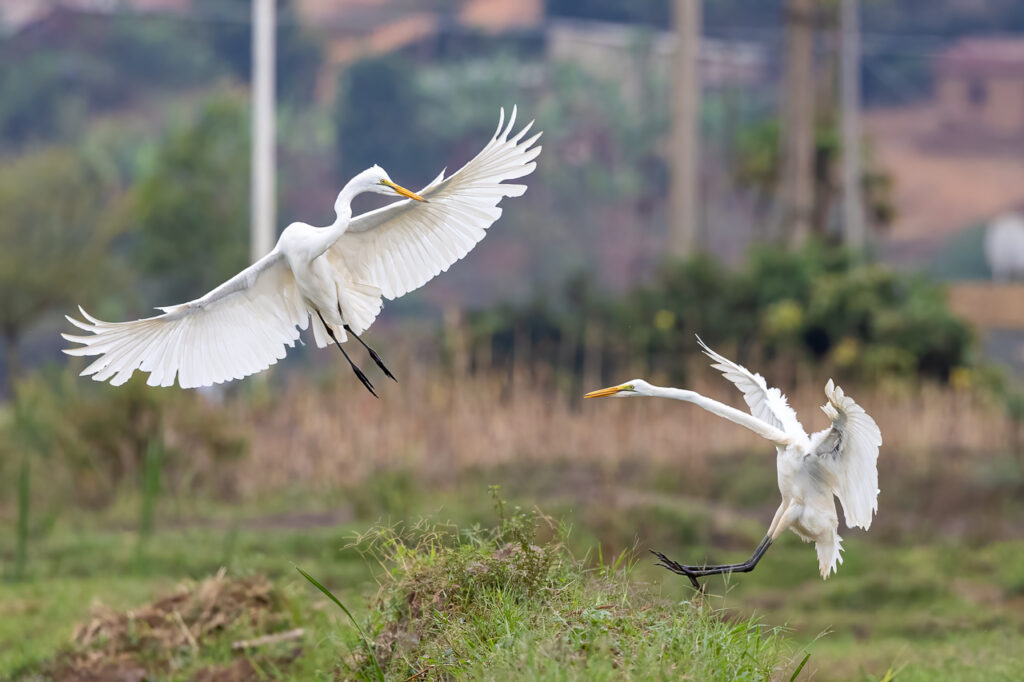
Very nice article. I would say that cattle egrets exhibit mutualism in that they feed on grasshoppers and other insects which are eating the same forage as the herbivores… Whether it is a measurable effect is debatable…
Thank you Brad, glad you enjoyed the article. You make an interesting point, if the effect was measurable and the cattle egrets do have a positive impact on the grazing herbivores by removing insects and grasshoppers then yes the relationship would be mutualism. In the article I also talk about mutualism but use the example of egret alarm calls providing a survival advantage to the herbivores. This example does depend on the context and the herbivore in question. These inter-species relationships fascinate me.